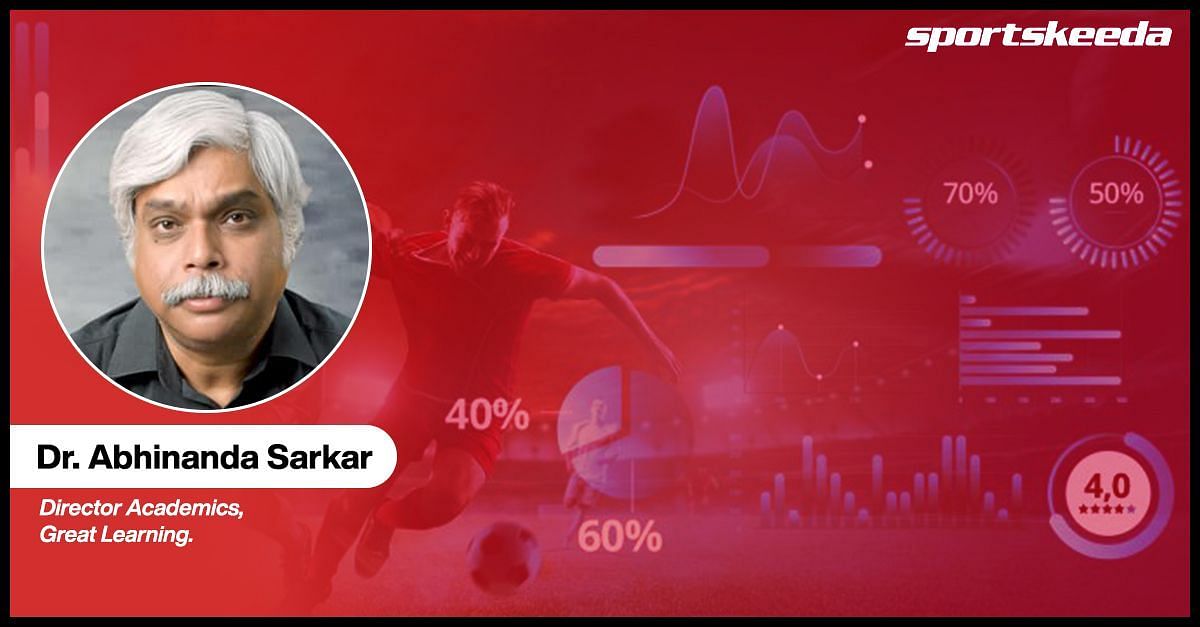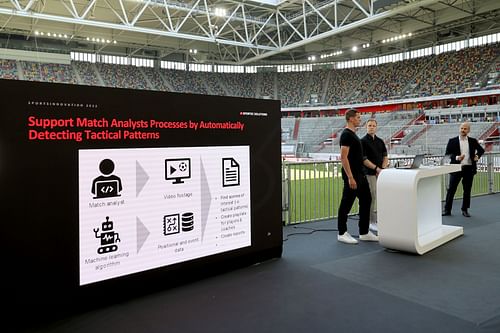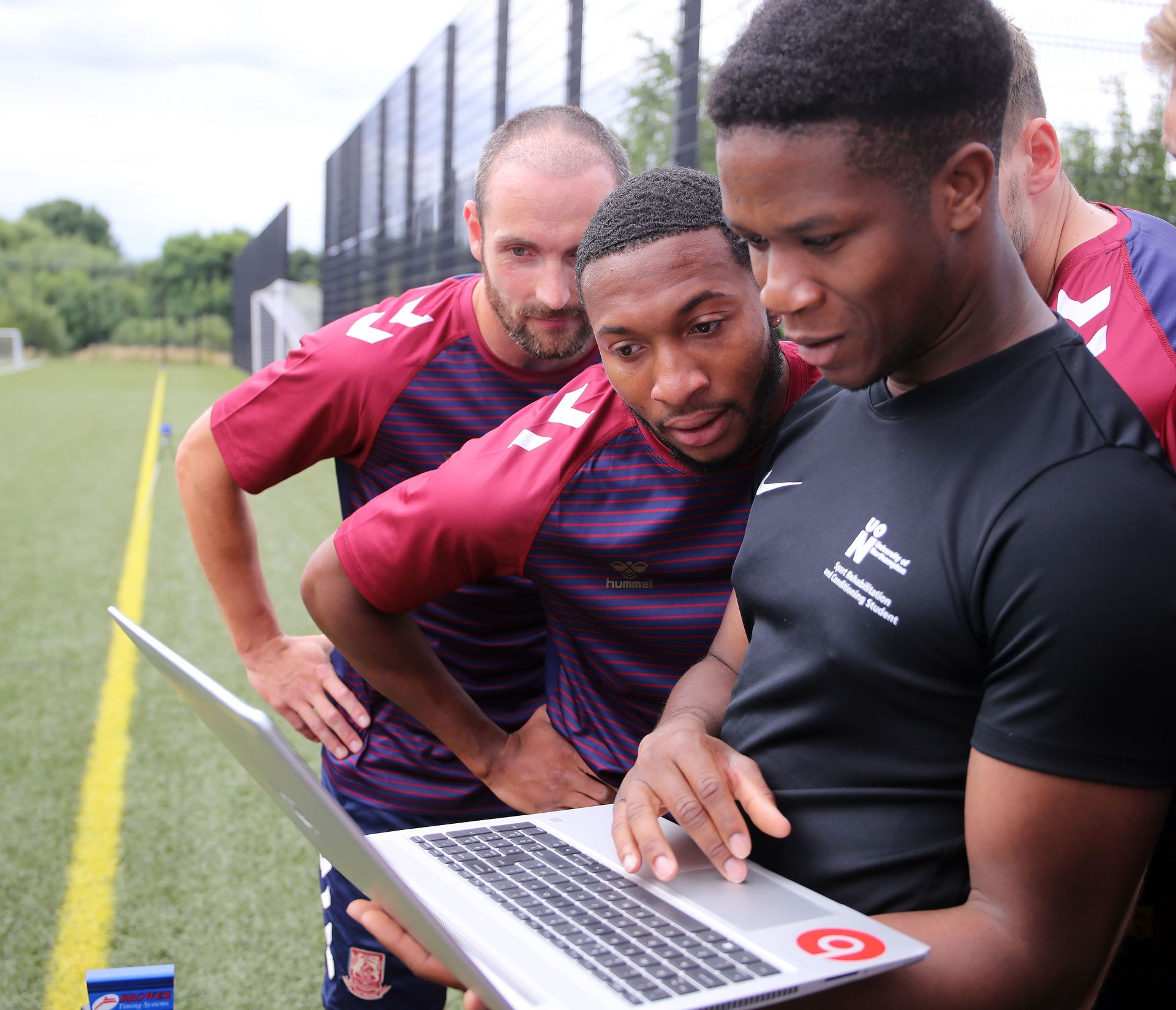
Shooting for perfection: How football embraced numbers and technology - Dr. Abhinanda Sarkar, Director, Academics, at Great Learning
Sports today are more data-driven than ever before, and data-based analysis has become part and parcel of every professional sports team. Dr. Abhinanda Sarkar, Director, Academics at Great Learning, sheds some light on the topic at hand and gives us some much-needed insight into sports data and analysis. He delves into the increasing use of technology and how it enables one to capture the essence of football with each calculated move.
With the increasing usage of data science and artificial intelligence, sports have taken a turn of their own. Although relatively new to the sports scene, AI has the ability to up the ante in a simple game.

Dr. Sarkar's insight, in his own words, was shared exclusively with Business of Sports.
In the ultra-competitive world of football, with almost universal access to superior training facilities and performance tools, the margins between three points and nothing are rarely down to just teams’ quality. Instead, these subtle differences owe a great deal to technology and its integration into various game levels.
Technology has become a valuable asset in football, capturing every interception, each dribble, and every nimble feint. It consolidates swarms of information into actionable insights that cover player scouting, management, training, match strategy, and just about every conceivable element associated with professionally kicking a ball.
At the intersection of data and AI:
Sports data has taken on a life of its own. Advancements in technology and computer vision have dramatically increased data capabilities in football. Between measuring complex performance metrics such as expected goals to providing detailed insights into player attributes, data underscores the modern game’s fast-paced, frenetic nature. Amidst the game’s million moving parts, data can turn intangible characteristics into identifiable information that reveals the thinking that goes into a player’s actions on the pitch.
Prompting this data and analytics spurt is primarily artificial intelligence, or AI, which is relatively new to the scene. It’s taken us this long to come to terms with its potential since football is rather complex; it’s ferociously dynamic, filled with repetitive yet non-linear patterns, and involves 22 players spread out over a large field. Computational processes and deep learning are needed to mature to accommodate the game’s massive scope.
Historically, artificial intelligence has been employed to evaluate individual player decisions leading to a goal and provide insights into strategic interactions during certain phases of play. AI also assists with player tracking, developing injury predictions, and gaging real-world actions against mathematical baselines, all of which are intrinsic elements of today’s game analytics.

For a better game
At its most basic, AI can predict the results of football matches, sometimes remarkably well. Statistical models by way of Bayesian inference can let us know how seeming favorites Portugal might fare against lowly New Zealand in a World Cup semi-final, for instance. At the other end of the spectrum, automated applications go so far as to parse phases of play from a video for analysis. And even further along the scale, AI’s scope is being tested by researchers to provide more solutions to subtle repetitive tasks and idiosyncratic human errors that plague the game.
Besides the obvious technical applications in video assistant referee (VAR) decisions and goal-line technology, AI has uses in sports medicine. These include monitoring player vitals through wearables, using statistical methods to help avoid sports injuries via large-scale research, and even helping customize diets based on players’ needs.
And perhaps most importantly, AI plays a huge role in sports performance, monitoring, capturing, and cataloging player performance in actual time, giving coaches immediate feedback on whether the formation needs some shaking up or if a player has to be moved elsewhere on the pitch. Current technology is sufficiently advanced to the point of combining automated videography and deep learning to track players’ actions and make forecasts.

AI in football is evolving rapidly. In fact, the previously mentioned VAR and associated camera technologies have made a great deal of progress since their first iterations. As a case in point, FIFA has been deploying semi-automated offside technology in its recent tournaments. For anyone unfamiliar with the current World Cup’s background, this new system provides automated offside alerts to VAR officials by tracking the exact location a player is inhabiting at a given instant. And Asonus, fans get to see a 3D animation of the offside event, which provides a clear perspective that is immediately understood.

Finally, football scouts have been able to use data-driven insights from sensors to find and choose the right player for a given position. While it might be impossible to watch and assess certain players for numerous reasons, AI is intervening and allowing this talent pool to connect with scouts worldwide. Now, someone in, say, Mongolia could catch the interest of PSG thanks to technology making the world a smaller place.
Technology will find a way
Football’s beauty lies in its simplicity, but for a sport whose aim is to kick a ball between two posts, it can throw up a list of challenges and complexities due to the vastness of the ecosystem. With current AI technology and data analytics, we are already streamlining tedious, time-consuming processes reasonably well. And we’ve barely scratched the surface! The future could bring newer hurdles, but technology will be on hand to offer solutions. Skilling up in AI would open a fantastic career path in sports, particularly for those passionate about football, weaponizing interest into a source of lucrative income.
About Dr. Abhinanda Sarkar
Dr. Abhinanda Sarkar is Director, Academics at Great Learning, where he teaches data, management, and technology courses. He received his B.Stat. and M.Stat. degdegreeom the Indian Statistical Institute (ISI), and a Ph.D. in Statistics from Stanford University. He has taught applied mathematics at the Massachusetts Institute of Technology (MIT), been on the research staff at IBM, led quality and analytics functions at General Electric (GE), served as Associate Dean at the MYRA School of Business, and co-founded Omix Labs.
About Great Learning
Great Learning is a part of BYJU’s group and a leading global ed-tech company for professional training and higher education. It offers comprehensive, industry-relevant, hands-on learning programs across various busibusinesses, technologiesd interdisciplinary domains driving the digital economy.
These programs are developed and offered in collaboration with the world's foremost academic institutions like Stanford Graduate School of Business, MIT Professional Education, The University of Texas at Austin, National University of Singapore, The University of Arizona, Deakin University, IIT Madras, IIT Bombay, IIT Roorkee, IIIT-Delhi and Great Lakes Institute of Management.
Great Learning is able to leverage the highly qualified, world-class faculty at these universities together with its vast network of 5000+ industry expert mentors to deliver an unmatched learning experience for 6.1 million learners from over 170+ countries around the world.